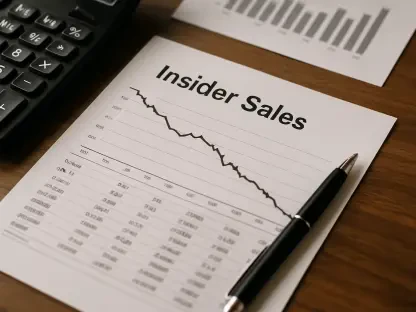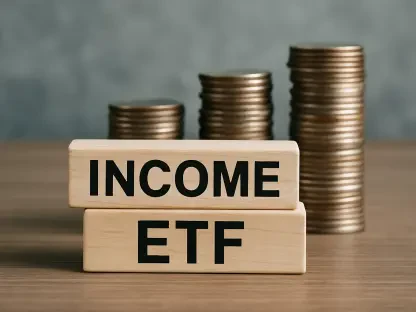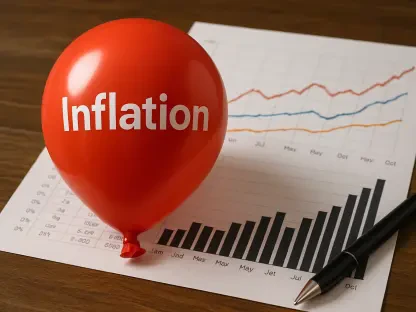The efficacy of the inverted yield curve as a recession predictor has long been a topic of interest for economists and financial analysts alike. Traditionally, an inverted yield curve, where long-term interest rates fall below short-term rates, signals the likelihood of an impending recession. However, the recent economic climate has thrown this historically reliable signal into question. Beginning in 2022, the yield curve inverted, yet a recession has not materialized, leaving experts puzzled. This unexpected turn of events has led to re-examination and debate about the yield curve’s accuracy in predicting economic downturns.
The Historical Reliability of the Inverted Yield Curve
Historically, the inverted yield curve has been an almost infallible recession indicator. Dating back to the 1950s, nearly every U.S. economic downturn was preceded by this signal. The inversion suggests that investors expect slower economic growth and lower interest rates in the future, typical conditions during a recession. For decades, this predictive power has been virtually unmatched, offering a clear warning sign to policymakers and investors. However, the current economic environment, particularly in light of the Covid-19 pandemic and various global economic changes, has somewhat clouded this once-clear signal.The New York Federal Reserve maintains that the 10-year/3-month yield curve inversion generally heralds a recession within 12 months. Their models still allocate a moderate probability of a recession by mid-2025. However, the current extension of the yield curve’s inversion without resulting in a downturn has many questioning whether the signal still holds the same predictive power in today’s economy. Economists have traditionally looked to the yield curve as a reliable forecasting tool, but its recent failure to predict a recession has led to scrutiny and reconsideration of its effectiveness.
Current Economic Anomalies
Despite the yield curve inverting in mid-2022, the U.S. economy has exhibited unexpected resilience. Economic growth has continued at an annualized rate of about 2.7% since Q3 2022. This robust growth rate surpasses the historical trend gains of around 2% annually, confounding expectations set by the inverted yield curve. Furthermore, GDP growth projections remain optimistic, with expectations of a 2.1% increase in the second quarter of 2024. This sustained economic expansion is at odds with the traditionally dire predictions that follow a yield curve inversion. Such resilience suggests that other factors might be mitigating the adverse effects usually signaling a recession.The disconnect between the yield curve inversion and actual economic performance prompts critical examination of underlying factors. It raises questions about whether the post-pandemic economic climate or other unique variables are neutralizing the warning signal, thereby altering its historically consistent outcomes. Experts are now considering the possibility that structural changes in the economy, such as new fiscal and monetary policies, as well as market dynamics, might be interacting in ways that the yield curve does not fully account for. This broadened perspective is necessary to understand why the predicted downturn has not yet occurred.
Expert Opinions and Skepticism
The prolonged period of inversion without a recession has left many economists perplexed. For instance, Joseph LaVorgna, chief economist at SMBC Nikko Securities, expresses confusion at the yield curve’s extended period of inaccuracy but remains unwilling to fully dismiss its predictive power. Similarly, Mark Zandi of Moody’s Analytics, while historically trusting the curve, now admits to discomfort with its sustained inversion. Such varying expert opinions highlight a significant divide in interpretations on the current economic climate.Several economists, including Jim Paulsen, suggest the economy might have weathered a technical recession before the yield curve inverted, thereby complicating the narrative. Additionally, many point to the Federal Reserve’s delayed response to high inflation as a critical factor in clouding the usual clarity of the yield curve’s recession signal. The divergence in expert viewpoints underscores the complexity of relying on a single indicator, particularly in an unprecedented economic environment.The discourse among experts underlines a significant divide in interpretations. While some are re-evaluating the curve’s reliability, others believe its historical accuracy may still hold, albeit with delays. These varying perspectives highlight the uncertain nature of economic predictions in the current climate. As economists and financial analysts navigate these uncertainties, the importance of multiple economic indicators and a more comprehensive analysis becomes clear.
Additional Indicators Pointing to Economic Caution
Beyond the yield curve, other economic indicators suggest caution. The Sahm Rule, for instance, signals a recession if the unemployment rate increases by half a point over three months. Observations suggest we might be nearing this trigger. Additionally, the steady downward trend in the money supply since its peak in April 2022 is another cause for concern. The Conference Board’s Leading Economic Indicators have shown a persistent negative trend, bolstering the argument for potential economic headwinds that could materialize into a broader downturn.These indicators collectively provide a more nuanced picture of the economic landscape. They reinforce the need for caution even as the inverted yield curve remains under scrutiny. While the yield curve has been a historically reliable signal, these additional indicators point to underlying vulnerabilities in the economy. Taken together, they may offer a more comprehensive and accurate prediction of economic trends.Still, the broader economic context features several conflicting signs. For instance, certain sectors may perform robustly even as others show signs of strain. This mixed performance can complicate the overall narrative offered by any individual indicator. These supplementary signals, when considered alongside the yield curve, might better prepare both policymakers and investors for potential economic shifts, capturing the complexity and multifaceted nature of modern economies.
The Role of Federal Reserve Policies and Market Dynamics
The reliability of the inverted yield curve as an indicator of upcoming recessions has been a longstanding subject of interest among economists and financial analysts. Traditionally, an inverted yield curve—when long-term interest rates dip below short-term rates—has been seen as a strong signal that a recession is on the horizon. However, the economic landscape starting from 2022 has cast doubt on this previously dependable metric. In 2022, the yield curve inverted, yet a recession did not follow, leaving experts scratching their heads.This unexpected development has prompted a renewed examination and spirited debate over the yield curve’s predictive power in signaling economic downturns. Some analysts argue that the unique circumstances and unprecedented economic conditions, such as the COVID-19 pandemic, geopolitical tensions, and unprecedented monetary policies, could be distorting traditional indicators. These anomalies might be making it challenging for the yield curve to operate as a reliable predictor. Others suggest that other factors, such as economic stimulus measures and consumer behavior, have played a significant role in preventing a recession despite the inverted yield curve.As a result, the once-clear relationship between an inverted yield curve and an impending recession is now being questioned. This necessitates further research and understanding to determine whether the yield curve can still be trusted as a forecasting tool, or if new indicators must be developed to better predict economic health in this evolving landscape.









